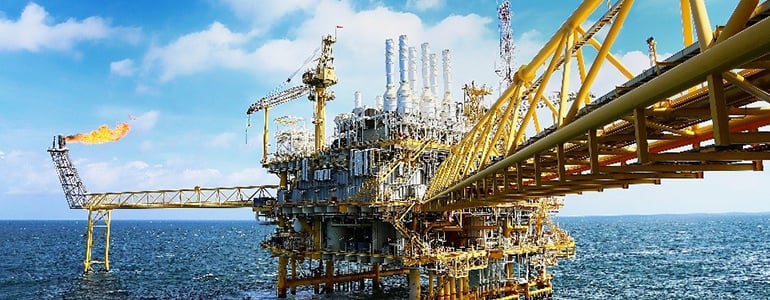The Transition from EN 13463 to EN ISO 80079

14 Mar 2019
Implications for Non-Electrical Hazardous Equipment Certification
It's important for manufacturers to address explosion safety risks for non-electrical equipment intended for hazardous locations and explosive atmospheres. ISO and the IEC published standards for non-electrical equipment in hazardous locations, ISO 80079-36 & -37 to better ensure compatibility and enhance the standard's level. These two ISO standards have been adopted as European Normative (EN) standards and supersede the EN 13463series of standards which have been withdrawn. Therefore, it is important to become familiar with the new standards.
- Transition of EN 13463-1 to EN ISO 80079-36
- In 2008, the IECEx decided to transition to the ISO 80079 series, making it a global standard and bringing non-electrical requirements to the IECEx scheme. While there are several changes; generally, products that complied with the basic requirements of EN 13463-1 should meet the general requirements of EN ISO 80079-36 with a few updates in the design documentation. The changes include:
- Introduction of equipment protection levels (EPLs) Ga/Gb/Gc and Da/Db/Dc, that align with IECEx requirements where EPLs are used instead of categories or zones.
- Introduction of dust groups IIIA/IIIB/IIIC, to align with the requirements of EN IEC 60079-0. It is now required to be categorized depending on the equipment's suitability for combustible flyings (IIIA), combustible flyings and non-conductive dust (IIIB) or combustible flyings, non-conductive dusts and conductive dust (IIIC).
- Manufacturers of ATEX Category 2 and 3 non-electrical equipment will now be subject to quality system audits (QAR) if they wish to obtain certification under the IECEx scheme.
- Combining EN 13463-5, EN 13463-6 and EN 13463-8 into EN ISO 80079-37
- The main protection concepts found in EN 13463 for assessing non-electrical equipment have been combined into EN ISO 80079-37. They cover construction safety (Ex c), control of ignition source (Ex b) and liquid immersion (Ex k). In addition to combining these considerations, the new standard includes:
- An additional method of ensuring lubrication is present in moving parts requiring it.
- Additional information for brakes and their use
- Expanded requirements for maintaining correct belt tension
- Further clarity on when Control of Ignition Source "Ex b" is to be applied
- Requirement to mark equipment with "Ex h" rather than "Ex b," "Ex c," or "Ex k"
- Manual details/information about which protection concept has been applied, along with the necessary information for each concept
- Changes to protection concepts within EN ISO 80079-37: As noted above, the marking requirement has changed from "Ex b" (control of ignition source), "Ex c" (constructional safety) and "Ex k" (liquid immersion) to "Ex h," for any or all of these considerations.
- EN ISO 80079-36 and EN ISO 80079-37 are now harmonized for ATEX and IECEx, giving manufacturers the option to obtain dual certification without requiring additional testing. This adds quality assurance for all non-electrical certification and opens the door to other global certifications such as InMetro in Brazil, CCC in China, or TR CU in Russia.
- It is important to note that as of October 31, 2019, the EN 13463-series of standards will no longer provide a presumption of conformity to the ATEX Directive. At a minimum, manufacturers will need to conduct a gap analysis to the EN ISO 80079-36 & -37 standards and update their Declarations of Conformity accordingly.
At a minimum, revised ignition hazard assessment, instructions manual, and schedule drawings are needed for updating the standards from EN 13463 to the EN ISO 80079-36 and EN ISO 80079-37 standards. If there are any changes in the product design, the certification body would need to reanalyse and/or retest the equipment based on the scope of revision.
Under the new standard, ATEX certification requirements for non-electrical equipment vary, depending on the zone the intended equipment will be used in. The variations include options for self-declaration, requirements for a Quality Assessment Notification (QAN) and more. They can be broken down in the following way:
- Zone 0: Manufacturers are not permitted to self-declare their equipment; an EU Type-Exam Certificate and a QAN is required.
- Zone 1: Manufacturers are permitted to self-declare non-electrical equipment provided they: assess to the new standard; complete an ignition hazard assessment; mitigate potential ignition sources that may be present during normal operation; construct a technical dossier with minimum criteria outlined and lodge with a Notified Body for a period of 10 years after the manufacture date; and keep an identical copy of the file in their quality system
- Zone 2: Manufacturers are permitted to self-declare non-electrical equipment provided they: assess the equipment to the new standard; complete an ignition hazard assessment; mitigate potential ignition sources that may be present during normal operation; and construct a technical dossier with the minimum criteria outlined the standard and retain a copy of the file for a period of 10 years after the manufacture date
It should be noted that the IECEx requires a Quality Assessment Report (QAR) for all certificates (except unit verifications) issued, regardless of intended area of installation.
For more insights on the transition from EN 13463 to EN ISO 80079, download our complimentary webinar recording.
Wesley Van Hill is the Global Technical Manager for Intertek's Hazardous Locations team and is responsible for multiple locations worldwide. His responsibilities include ATEX and IECEx technical qualifications and consistent technical decision making for all Hazardous Locations related activities. He has been involved in the evaluation of equipment for hazardous locations almost 15 years and has been a part of multiple technical committees and panels.

